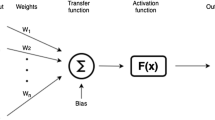Abstract
In this article, the formation control of quad-rotor unmanned aerial vehicle (UAV) via pigeon inspired optimization (PIO) is designed. The nonlinear mathematical model of the quad-rotor UAV is used by applying algebraic graph theory and matrix analysis. A high order consistent formation control algorithm with fixed control topology is designed by using a position deviation matrix to describe its formation To control the attitude of quad-rotor UAVs, it is difficult to obtain a set of optimal solutions, and hence a PIO based algorithm with variable weight hybridization is proposed. The algorithm is mainly composed of two parts. First, according to the distance between the particles in the iterative process, the inertia weight is dynamically changed, and the coefficient is adjusted to control the degree of influence on its inertia weight. Second, the overall scenario is designed by using MATLAB based simulations which show that the formation control of the quad-rotor UAV is achieved with the help of PIO.
Similar content being viewed by others
References
Mohamed N, Al-Jaroodi J, Jawhar I, et al. Unmanned aerial vehicles applications in future smart cities. Tech Forecast Soc Change, 2020, 153: 119293
Ronchi, Alfredo M. Safety and Security. In: e-Citizens. Cham: Springer, 2019. 43–108
Sharif Azadeh S, Bierlaire M, Maknoon M Y. A two-stage route optimization algorithm for light aircraft transport systems. Transp Res Part C Emerg Technol, 2019, 100: 259–273
Coutinho W P, Battarra M, Fliege J. The unmanned aerial vehicle routing and trajectory optimisation problem, a taxonomic review. Comput Ind Eng, 2018, 120: 116–128
Patley A, Bhatt A, Maity A, et al. Modified particle swarm optimization based path planning for multi-UAV formation. AIAA Parper, 2019. AIAA 2019-1167
Cliff O M, Saunders D L, Fitch R. Robotic ecology: Tracking small dynamic animals with an autonomous aerial vehicle. Sci Robot, 2018, 3: eaat8409
Qiu H, Duan H. A multi-objective pigeon-inspired optimization approach to UAV distributed flocking among obstacles. Inf Sci, 2020, 509: 515–529
Xing D, Zhen Z, Gong H. Offense-defense confrontation decision making for dynamic UAV swarm versus UAV swarm. Proc Inst Mech Eng Part G, 2019, 233: 5689–5702
Janebäck E, Matilda K. Friendly robot delivery: Designing an autonomous delivery droid for collaborative consumption. Dissertation for Master’s Degree. Göteborg: Chalmers University of Technology, 2019
Pang S, Wang J, Liu J, et al. Three-dimensional leader-follower formation control of multiple autonomous underwater vehicles based on line-of-sight measurements using the backstepping method. Proc Inst Mech Eng Part I, 2018, 232: 819–829
Pantelimon G, Tepe K, Carriveau R, et al. Survey of multi-agent communication strategies for information exchange and mission control of drone deployments. J Intell Robot Syst, 2019, 95: 779–788
Ma Y, Zhao Y, Qi X, et al. Cooperative communication framework design for the unmanned aerial vehicles-unmanned surface vehicles formation. Adv Mech Eng, 2018, 10: 168781401877366
Ayaz M. Comparative study of indoor navigation systems for autonomous flight. TELKOMNIKA, 2018, 16: 118–128
Baca T, Hert D, Loianno G, et al. Model predictive trajectory tracking and collision avoidance for reliable outdoor deployment of unmanned aerial vehicles. In: Proceedings of the 2018 IEEE/RSJ International Conference on Intelligent Robots and Systems (IROS). New York: IEEE, 2018. 6753–6760
Bhatt A, Maity A, Das K. Path planning for UAV using Sniff-Dog-Algorithm. In: The Proceedings of 2018 International Conference on Unmanned Aircraft Systems (ICUAS). New York: IEEE, 2018. 692–701
Navaneethkrishnan B, Pranjal B, Saumya K S, et al. State-space identification of unmanned helicopter dynamics using invasive weed optimization algorithm on flight data. arXiv: 1809.05021
Oruc B E, Kara B Y. Post-disaster assessment routing problem. Transp Res Part B, 2018, 116: 76–102
de Angelis E L, Giulietti F, Rossetti G. Multirotor aircraft formation flight control with collision avoidance capability. Aerosp Sci Tech, 2018, 77: 733–741
Bonyan Khamseh H, Janabi-Sharifi F, Abdessameud A. Aerial manipulation—A literature survey. Robot Auton Syst, 2018, 107: 221–235
Bernard M, Kondak K, Maza I, et al. Autonomous transportation and deployment with aerial robots for search and rescue missions. J Field Robot, 2011, 28: 914–931
Han T, Guan Z H, Wu Y, et al. Three-dimensional containment control for multiple unmanned aerial vehicles. J Franklin Inst, 2016, 353: 2929–2942
Sovinec C R, Glasser A H, Gianakon T A, et al. Nonlinear magnetohydrodynamics simulation using high-order finite elements. J Comput Phys, 2004, 195: 355–386
Duan H, Qiao P. Pigeon-inspired optimization: A new swarm intelligence optimizer for air robot path planning. Int J Intell Comput Cybernet, 2014, 7: 24–37
Duan H, Luo Q. New progresses in swarm intelligence-based computation. Int J Bio Inspir Comput, 2015, 7: 26
Zhang S, Duan H. Gaussian pigeon-inspired optimization approach to orbital spacecraft formation reconfiguration. Chin J Aeronaut, 2015, 28: 200–205
Author information
Authors and Affiliations
Corresponding author
Rights and permissions
About this article
Cite this article
Bai, T., Wang, D. & Masood, R.J. Formation control of quad-rotor UAV via PIO. Sci. China Technol. Sci. 65, 432–439 (2022). https://doi.org/10.1007/s11431-020-1794-2
Received:
Accepted:
Published:
Issue Date:
DOI: https://doi.org/10.1007/s11431-020-1794-2




